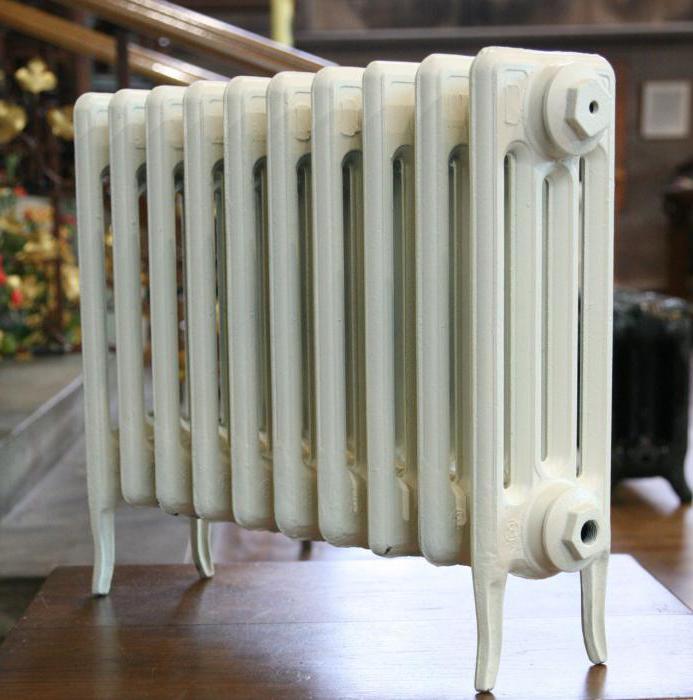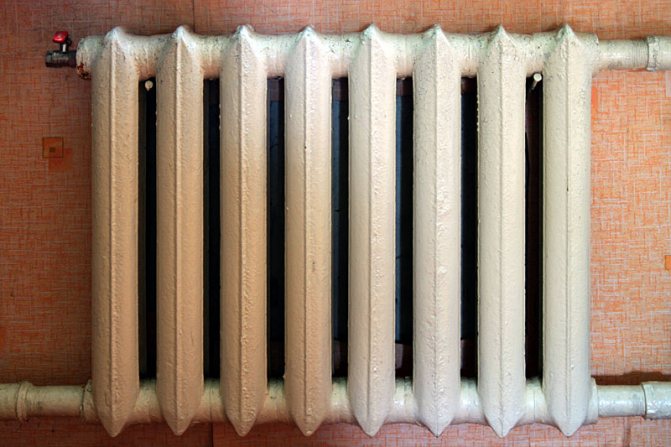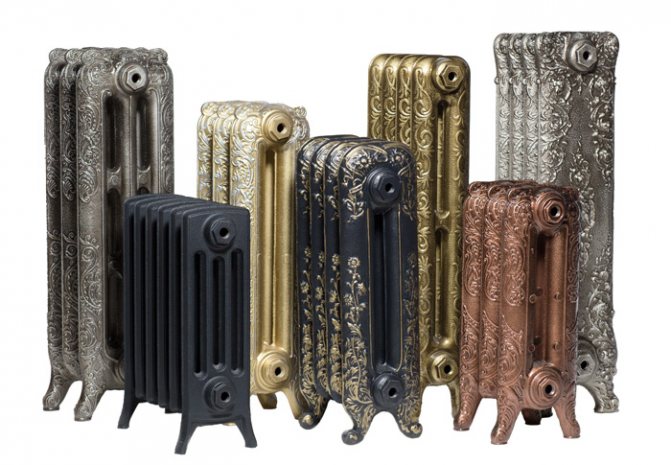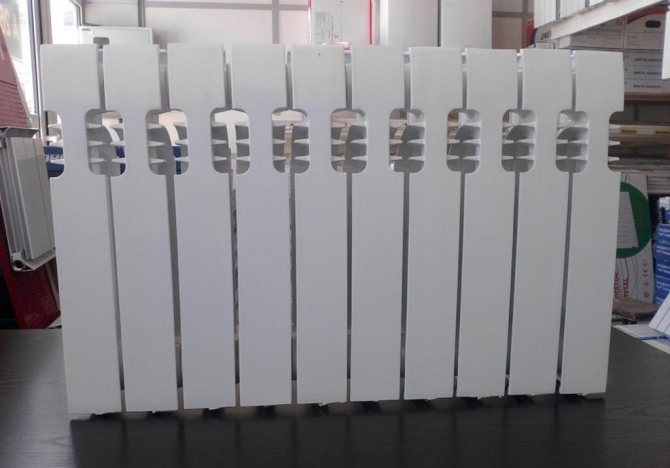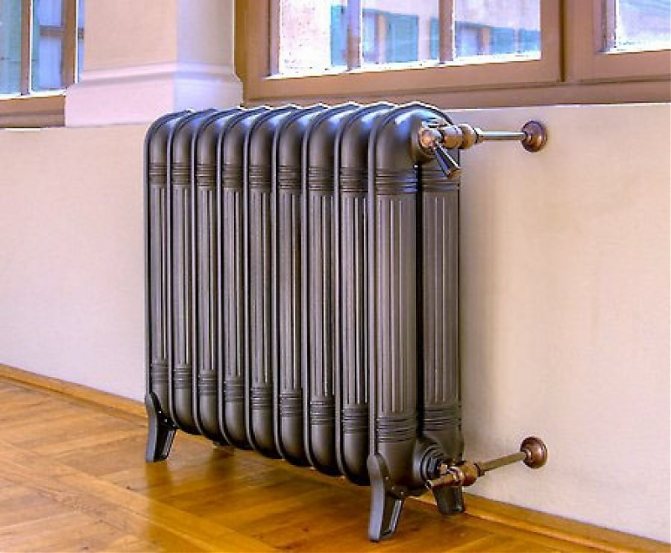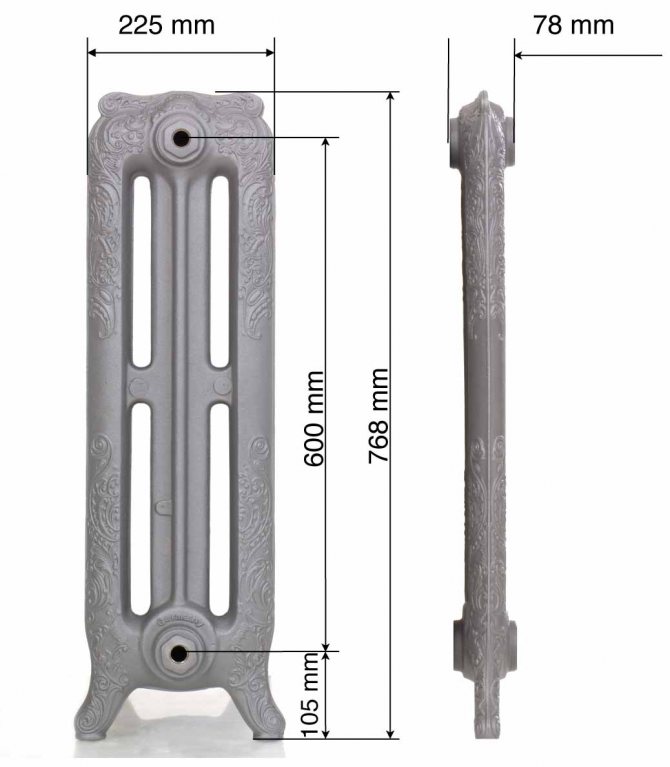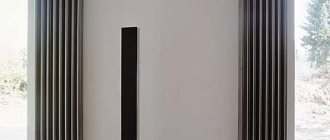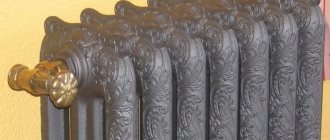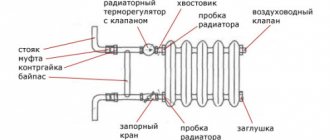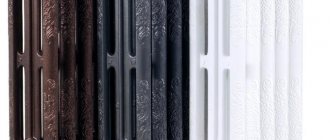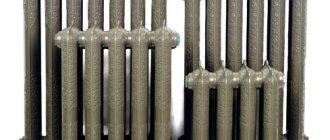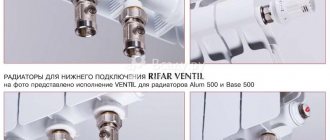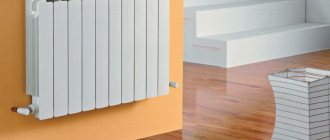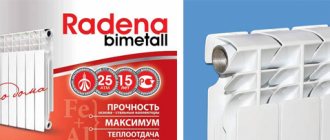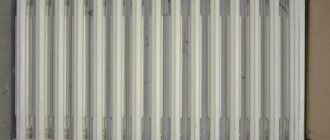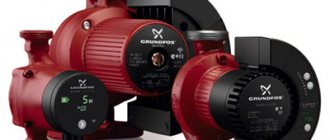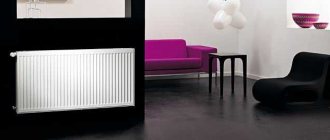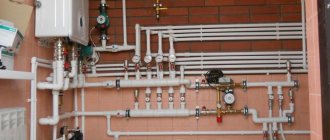Purpose, advantages and disadvantages of MC 140 radiators
The technical parameters of MC 140 cast-iron radiators allow them to be used in steam heating systems of any buildings with practically no restrictions: in private houses, country cottages, apartments in apartment buildings, administrative offices, public buildings, industrial, warehouse, retail premises. The equipment is designed for operation in temperate and cold climates (UHL).
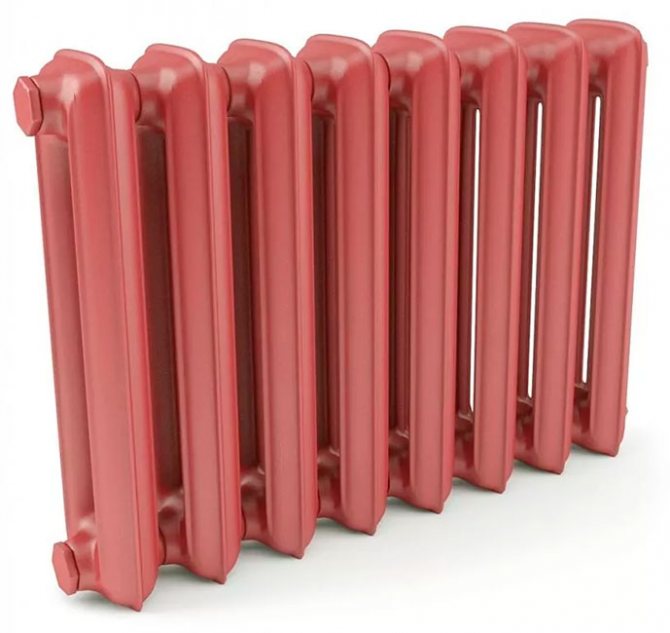
Advantages of heating radiators MC 140
- Long service life. This is one of the most durable types of radiators with a service life of 50 years.
- Reliability. A hundred-year history of this type of radiator on the heating equipment market has confirmed in practice its high reliability.
- Anti-corrosion resistance. Cast iron does not deteriorate over time when exposed to water.
- Undemanding to the quality of the coolant. Cast iron radiators are not sensitive to the quality of the water used inside them. The presence of sand, dirt, high content of salts, acids, alkalis in water does not have a strong effect on the life of cast iron radiators.
- Simplicity of steam heating systems. Cast iron radiators can be used in networks with natural circulation of water, without using a pump. They are compatible with all types of boilers - solid fuel, gas, pellet, liquid fuel.
- Thermal inertness. Cast iron heats up for a long time, accumulates heat well, cools slowly. In a heating system, this is considered a great advantage, since after the burner is turned off, the cast-iron radiator remains warm for a long time, giving off heat to the room.
Cons of heating radiators MC 140
- Sensitivity to water hammer.
- The tendency to slagging of internal surfaces, which over time leads to a decrease in heat transfer.
- Radiators are assembled from separate sections, the joints of which are sealed with rubber gaskets. The life of the gaskets is much shorter than that of cast iron. In order to avoid leaks, after several years of operation, failed intersection gaskets must be replaced.
- The appearance of such radiators is not sophisticated enough; the surface requires painting.
About GOSTs and manufacturers
When choosing cast-iron radiators, great importance is given to the country of origin. It is believed that foreign products are processed internally, with a higher quality, which makes it possible to use a coolant with a small hydraulic resistance. The statement is at least controversial. Known throughout the post-Soviet space, cast-iron radiators MS 140 500 technical characteristics, which are determined by specially developed GOST 8960, are hardly inferior in quality to Turkish batteries made from imported American raw materials, especially since foreign manufacturers have little idea of the specifics of the operation of Russian CHP plants.
The domestic manufacturer puts increased strength into the product.
Heating systems tests are obligatory before each heating season. Workers of the CHP, supply critical pressure to the pipes of the heating system. As a result, in houses, emergencies are possible. foreign products are not designed for pressures exceeding 5.5 - 6 atmospheres. While, in the characteristics of domestic radiators, there is a figure of 9 atmospheres.
Technical characteristics of radiators MC-140 - 500
Radiators of the MC group belong to the category of sectional ones - they are assembled into a single whole from separate sections.
Section of the cast iron radiator ms 140.
The sections are connected to a radiator using intersection gaskets.
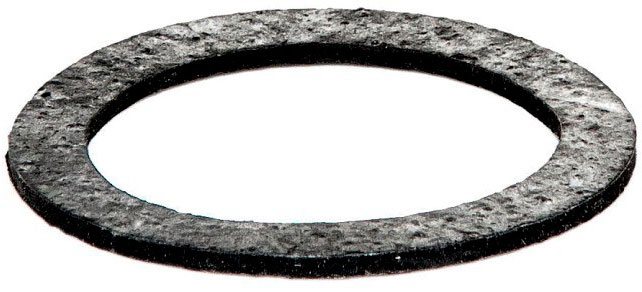

Cross-section gasket for ms 140 cast iron radiator.
One section is pressed against another with a nipple.
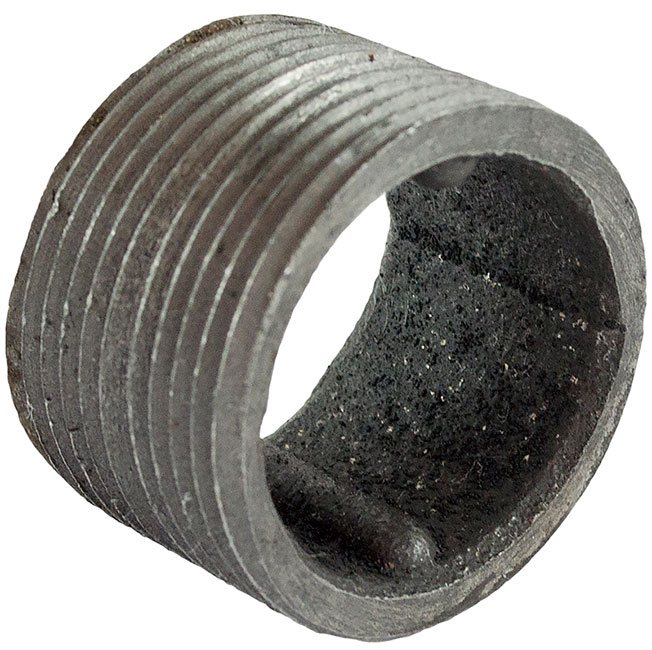

Cast iron radiator nipple ms 140.
The ends of the radiator are closed with plugs, which can be shut-off and straight-through.
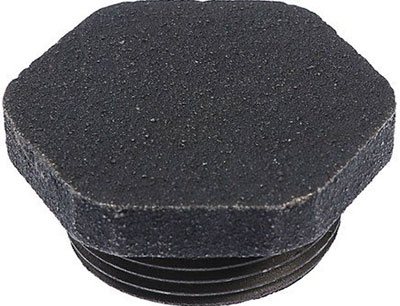

Radiator shut-off plug ms 140.
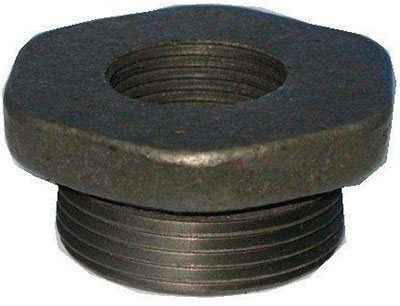

Radiator through plug ms 140.
Sections are cast from gray cast iron with graphite additives. Individual parameters of MC 140 radiators may vary slightly in models from different manufacturers.
The main characteristics of the MC 140 cast iron radiator:
| Radiator type | sectional |
| Number of channels for the coolant, pcs | 2 |
| Number of sections, pcs | from 2 to 10 |
| Nominal heat flux of one section, W | 160 |
| Outer shell cover | primer GF-021/0119 |
| Section material | gray cast iron in accordance with GOST 1412-85 |
| Cross-section spacer material | rubber in accordance with GOST 1412, capable of withstanding temperatures up to + 150ºC |
| Nipple material | cast iron or steel. GOST 1412 or 1050 |
| Heating area of one section, m2 | 0.195 |
| Center distance, mm | 500 |
| Nipple hole thread size | G11 / 4 |
| Coolant type | water |
| Maximum coolant temperature, 0С | + 1300C |
| Working excess pressure of the coolant, MPa (kgf / cm2) | 0.9 |
Other technical data:
| Number of sections, pcs. | Weight, kg | Length, mm | Rated heat flux, kW | Capacity, dm3 (l) |
| 2 | 12.8 | 227 | 0.32 | 2.50 |
| 3 | 18.8 | 331 | 0.48 | 3.75 |
| 4 | 24.8 | 435 | 0.64 | 5.00 |
| 5 | 30.8 | 539 | 0.80 | 6.25 |
| 6 | 36.8 | 643 | 0.96 | 7.50 |
| 7 | 42.8 | 747 | 1.12 | 8.75 |
The basic characteristics of a radiator can be identified by the model name and markings.
for example, model MC-140-500-0.9-7 denotes a radiator with the name MC, depth 140 mm, center distance 500 mm, ultimate system pressure 0.9 MPa, with the number of individual blocks in the radiator equal to 7.
Classic batteries
Indeed, 1 section of the classic Soviet MS 140 battery, which is on sale to this day, has a considerable weight - 7.12 kg. If we take into account the fact that the volume of one section of the MC 140 cast-iron battery is 1.5 liters of water, then the total mass will be 8.62 kg. Knowing that the thermal power of each section is approximately 170 W, then 12 such sections will be required for an average area of 20 m2, this will be 85.4 kg in weight, and 103.4 kg with water.
Note: hereinafter, for a better understanding of the issue, an example of an enlarged calculation of the thermal power and the number of sections is given.
You can say that it is not necessary to put one large device, you can divide it into two, and you will be right. However the net weight of old-style cast iron batteries will then be 43 kgthat, according to the rules of labor protection, it is not allowed to be lifted by one person, an assistant will be required.
The second problem is that classic radiators are designed only for wall mounting, and the vast majority of modern houses are built from porous materials, at best from aerated concrete or foam concrete, at worst from SIP panels with foam filling. Such walls will require a special fastening for cast-iron radiators of a complex design with fixation at many points, which you are unlikely to like.
Technical instructions
1. Installation of heating equipment should be trusted by organizations specialized in the field of construction and installation work, which have an appropriate license.
2. Connecting radiators with less than 10 sections can be done in any way - bottom, top, diagonal. If there are more than 10 sections, then it is recommended to connect in a diagonal way: the coolant inlet is top, the outlet is bottom.
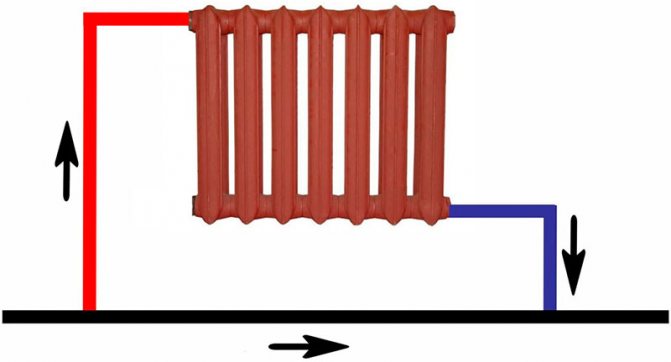

Diagonal connection of the radiator ms 140.
3. Before installing the radiator, it is necessary to carry out a hydraulic test of the integrity of the device, the tightness of the gaskets, the strength of the nipple connections. For this, hydraulic testing is carried out under a pressure of 1.5 MPa. If a leak is detected due to loosening of the nipple connections, they must be tightened and the test carried out again.
four.When changing (increasing or decreasing) the number of blocks in the radiator, it is necessary to use only gaskets that are established by the requirements of GOST 1412. After assembling the radiator, the strength of the intersection connections is checked.
This is done in a standard way - hydraulic tests are carried out under a high pressure of 1.5 MPa, exceeding the maximum permissible loads. During the test, the prefabricated structure shall not leak or allow air bubbles to pass through.
5. After the completion of the installation work, the entire water heating system is pressurized, based on the results of which an act on the commissioning of the facility is drawn up.
Selection and installation recommendations
The selection of this type of batteries comes down to determining the required number of sections for heating a particular room and a suitable size. To do this, you should know the required thermal power or approximately calculate it by quadrature, and take heating radiators with some margin. If we take as a basis that for each m2 of area you need 100 W of thermal energy, then for a room of 10 m2 you will need 1 kW of heat, and sections of the MC 140 500 device - 1000/160 = 6.25, 7 pieces are taken.
For the northern regions, an increasing coefficient from 1.5 to 2 must be applied to the value of the thermal power, and for the southern regions, a decreasing index equal to 0.7.
Installation of radiators is carried out to the outer wall in accordance with the diagram.
2 types of brackets are used for mounting MC 140 batteries: steel and cast iron.
There are paired brackets welded with a strip that are best used when mounting on a wall of porous materials. They can be fixed to the surface at several points.
Operating conditions
The radiator is used in water / steam heating systems with any kind of boiler, in which the heat carrier is ordinary water, without specific requirements for its quality.
Installation should be carried out only in a heating network that is designed, installed and operated in accordance with the regulatory documentation adopted by state industry organizations.
For Russia, such a normative act is the rules of SP 60.13330.2012 or 73.13330.2012.
Inertia and service life
As buyers emphasize, even 60 minutes after the boiler is turned off, the batteries will retain 30% of the radiated heat. But for steel radiators, this figure is only 15%. It is impossible not to mention also the long service life. If we are talking about a high-quality cast iron radiator, then such equipment will be able to serve for 100 years, although manufacturers only talk about 30 years.
Due to the internal cross-section of the radiators, the described devices rarely require cleaning. Among other things, cast iron simply cannot cause galvanic corrosion. Experienced users say: this indicates that there simply should not be any conflicts with steel or plastic pipes.
